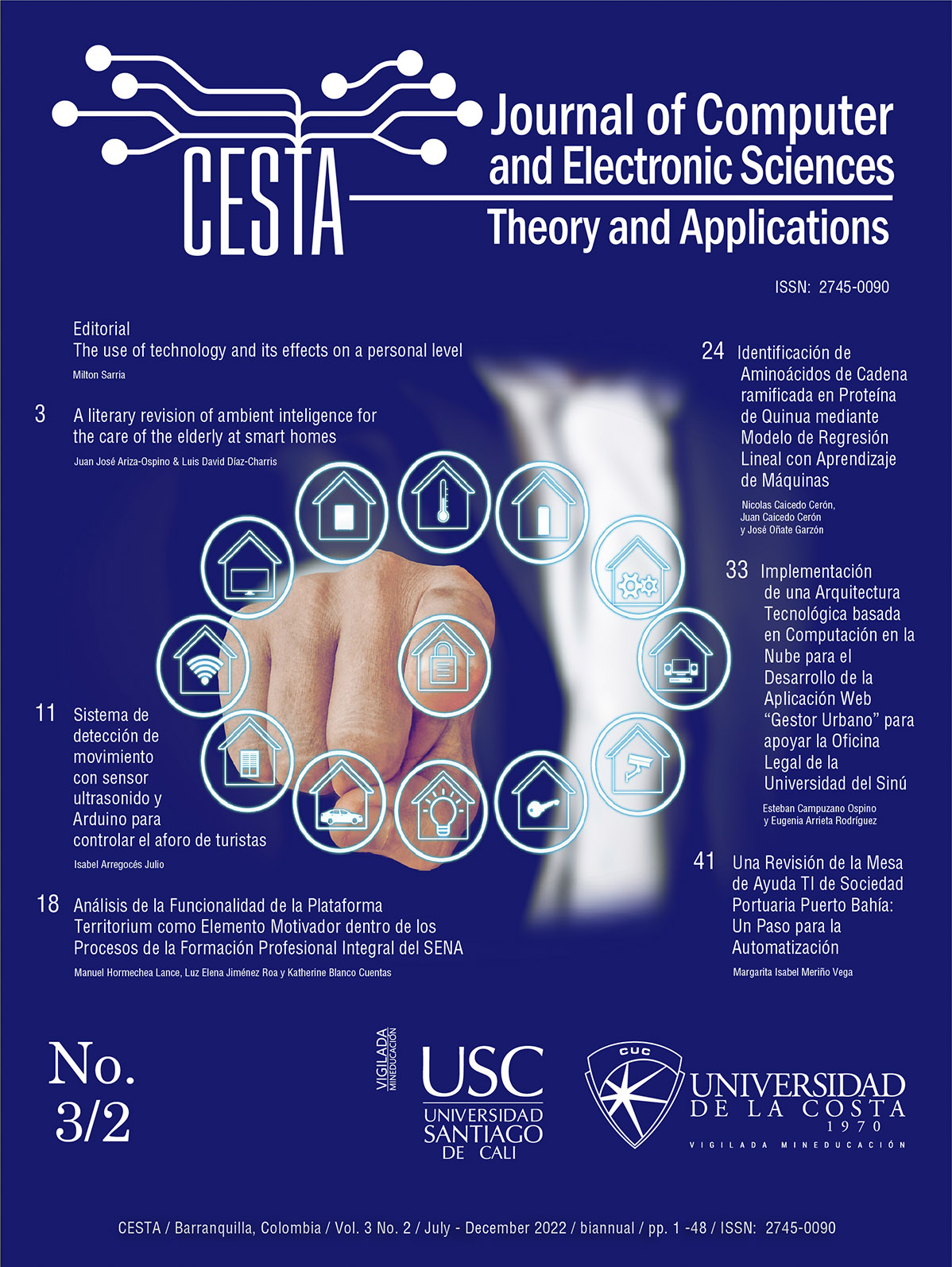Motion detection system with ultrasound sensor and Arduino to control the capacity of tourists
DOI:
https://doi.org/10.17981/cesta.03.02.2022.02Keywords:
Arduino; distancia; sensor ultrasonido; sistema; turismo.Abstract
Introduction: As a result of the pandemic caused by the Sars-Cov-2 virus, countries have imposed measures so that estab-lishments can gradually normalize their activities in a transi-tion stage that points to economic reactivation in the tourism sector. For the reopening of the scenarios arranged in cultural tourism, it is necessary to strictly comply with social distanc-ing and avoid crowds, which is why it is essential to limit the capacity or the capacity of visitors.
Objective: To present the design of a data acquisition pro-totype using an HC-SR04 ultrasonic sensor programmed with Arduino, whose implementation allows to control the maximum capacity of tourists in closed environments such as museums, libraries, theme parks, buildings, art galleries and archaeologi-cal sites.
Methodology: The implementation of a system based on IoT and data analytics in a tourism context was proposed. Pro-gramming with Arduino code allowed the capture and visual-ization of data for 48 hours.
Results: Through the analysis of the captured information, it was possible to alert about the maximum capacity established for the parameterized capacity of visitors, identifying through the notifications the risk levels.Conclusions— The developed system allows alerting about the maximum capacity in closed spaces, generating control and reducing the probability of contagion in these spaces.
Downloads
Published
How to Cite
Issue
Section
License
Copyright (c) 2022 Isabel Arregocés Julio

This work is licensed under a Creative Commons Attribution-NonCommercial-NoDerivatives 4.0 International License.
Los artículos publicados son de exclusiva responsabilidad de sus autores y no reflejan necesariamente las opiniones del comité editorial.
La Revista CESTA respeta los derechos morales de sus autores, los cuales ceden al comité editorial los derechos patrimoniales del material publicado. A su vez, los autores informan que el presente trabajo es inédito y no ha sido publicado anteriormente.
Todos los artículos están bajo una Licencia Creative Commons Atribución-NoComercial-SinDerivadas 4.0 Internacional.



 English
English
 Español (España)
Español (España)






